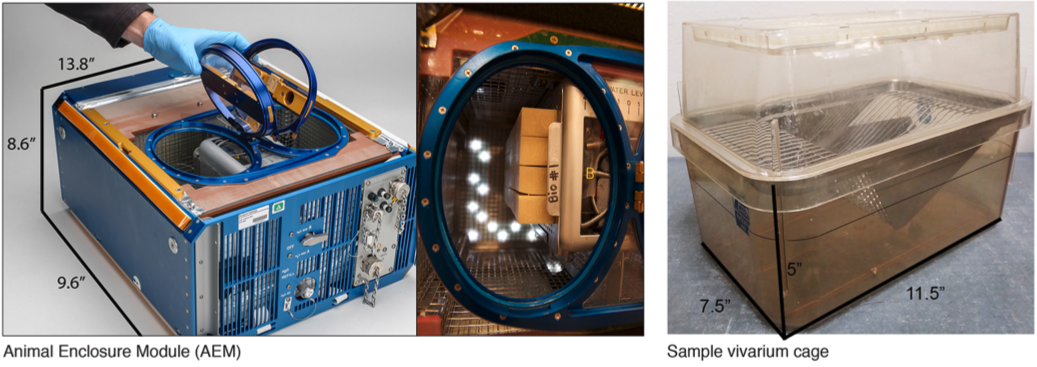First GeneLab-Generated Research Article Published in Scientific Reports
GeneLab scientists authored an original research article, “Global Transcriptomic Analysis Suggests Carbon Dioxide as an Environmental Stressor in Spaceflight: A Systems Biology GeneLab Case Study,” published in the March 2018 issue of Scientific Reports. This landmark paper represents the first scientific publication derived wholly from publicly available GeneLab data.
The research team, comprising GeneLab scientists Afshin Beheshti, Egle Cekanaviciute, David J. Smith, and Sylvain V. Costes, examined how rodent cage architecture might influence atmospheric carbon dioxide levels, and consequently, physiological responses in spaceflight. The analysis used only ground (control) samples from four different rodent research spaceflight experiments, including two flown on different Space Shuttle missions, and one each on the International Space Station and the Bion-M1 mission. None of the four source experiments was designed to examine carbon dioxide exposure, thus illustrating the process of generating new hypotheses and informing future experimental research by analyzing data generated from multiple spaceflight and spaceflight-relevant experiments held in the GeneLab database.
Read the full article here: https://www.ncbi.nlm.nih.gov/pmc/articles/PMC5843582/

GeneLab Podcast: Radiation Science Using GeneLab
![]()
New Rodent Datasets Curated and Published
GLDS-168: RR-1 and RR-3 mouse liver transcriptomics with and without ERCC control RNA spike-ins
All data sets have some degree of technical variability. This complicates efforts to understand what patterns are real, and which are artifacts of the analytical method. Internal standards, where analytes are included at known concentrations, provide benchmarks that aid in data interpretation. To this end, the External RNA Control Consortium (ERCC) developed a standard set of 92 poly-adenylated RNA transcripts at known ratios to be added to RNA extracts before library generation and sequencing.
New Rodent Research-3 omics data
GeneLab has adopted the ERCC RNA spike-in mix as an internal standard to be added before generation of all RNA sequencing data sets. To test the utility of this standard, GeneLab sequenced total RNA extracted from mouse livers from the Rodent Research 1 and Rodent Research 3 missions with and without the ERCC RNA. These data are published in GLDS-168.
Previous experiments have demonstrated many changes in gene expression due to microgravity and radiation. The Rodent Research 3 (RR-3) mission was sponsored by the pharmaceutical company Eli Lilly and Co. and the Center for the Advancement of Science in Space to primarily study the effectiveness of a potential countermeasure for the loss of muscle and bone mass that occurs during spaceflight.
To increase the omics data from spaceflight experiments, GeneLab has acquired and processed various tissues from control (sham) mice from the RR-3 mission. Transcriptomics by RNA-Seq, proteomics, and/or epigenetics data have been published for both flight and ground control (sham) samples from eye, adrenal glands, and kidney. Data analyzed from this study can be compared or supplemented to the omics data from the RR-1 mission.
- GLDS-161: Rodent Research-3-CASIS: Mouse adrenal gland transcriptomic, proteomic, and epigenomic data
- GLDS-162: Rodent Research-3-CASIS: Mouse eye transcriptomic and proteomic data
- GLDS-163: Rodent Research-3-CASIS: Mouse kidney transcriptomic, proteomic, and epigenomic data

Do you have a publication that cites GeneLab?
We would like to know! Please send us your citation and it will be posted on the GeneLab website.
Sincerely,
The GeneLab Team

